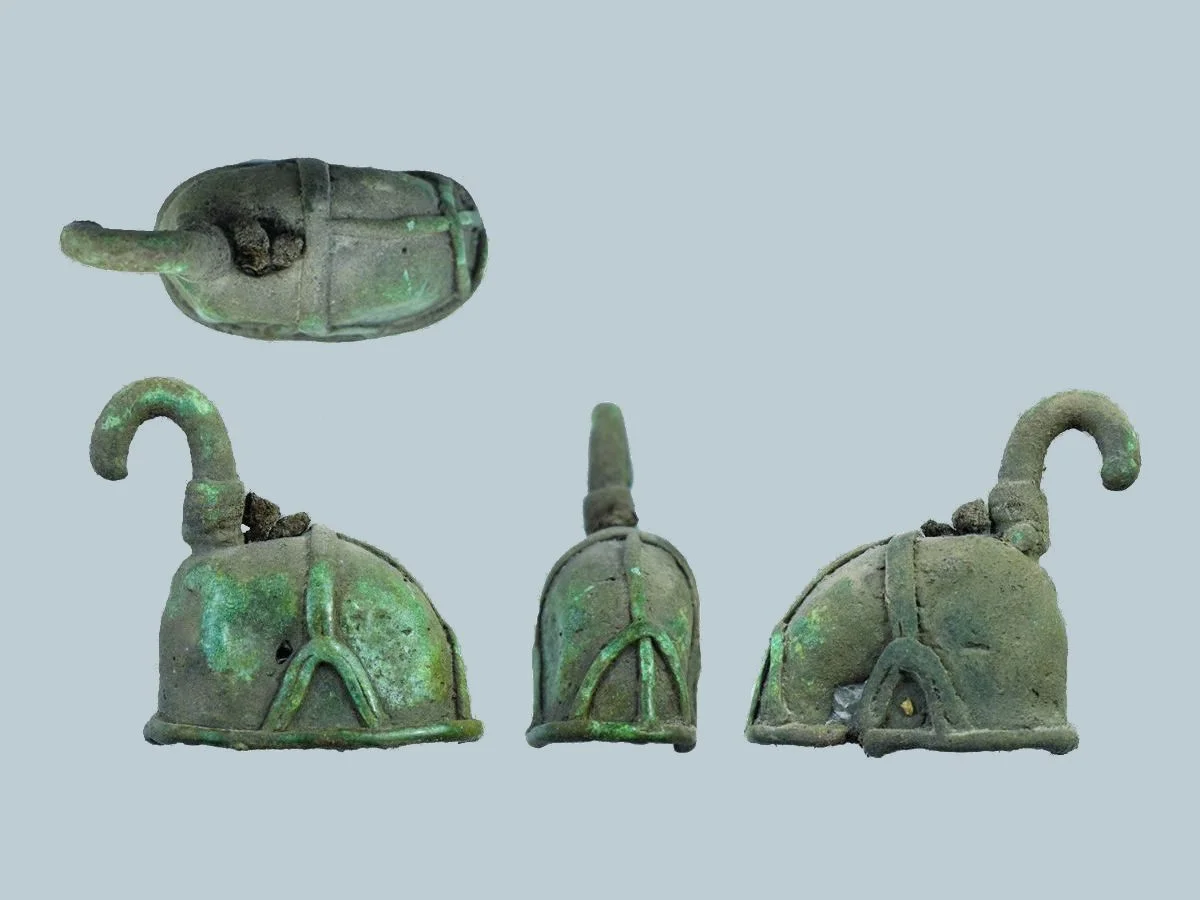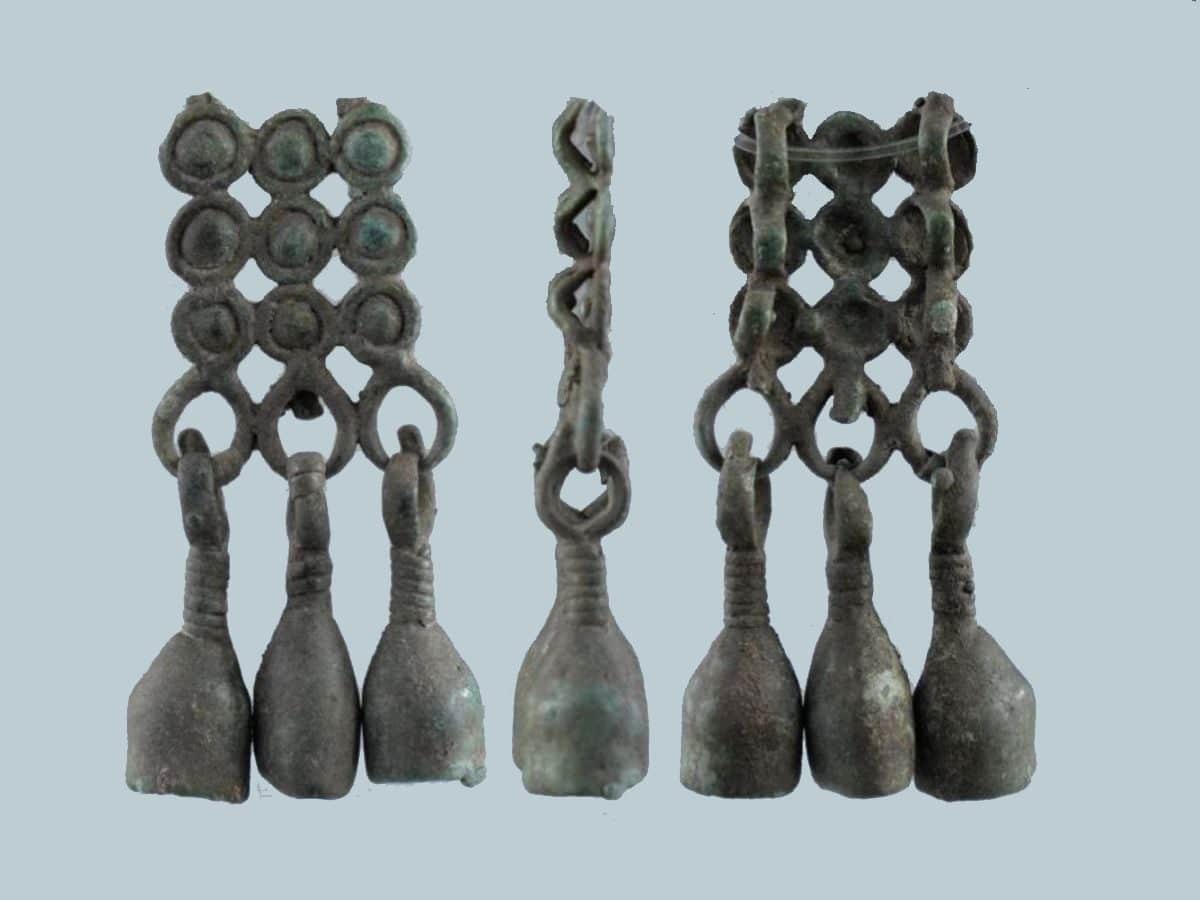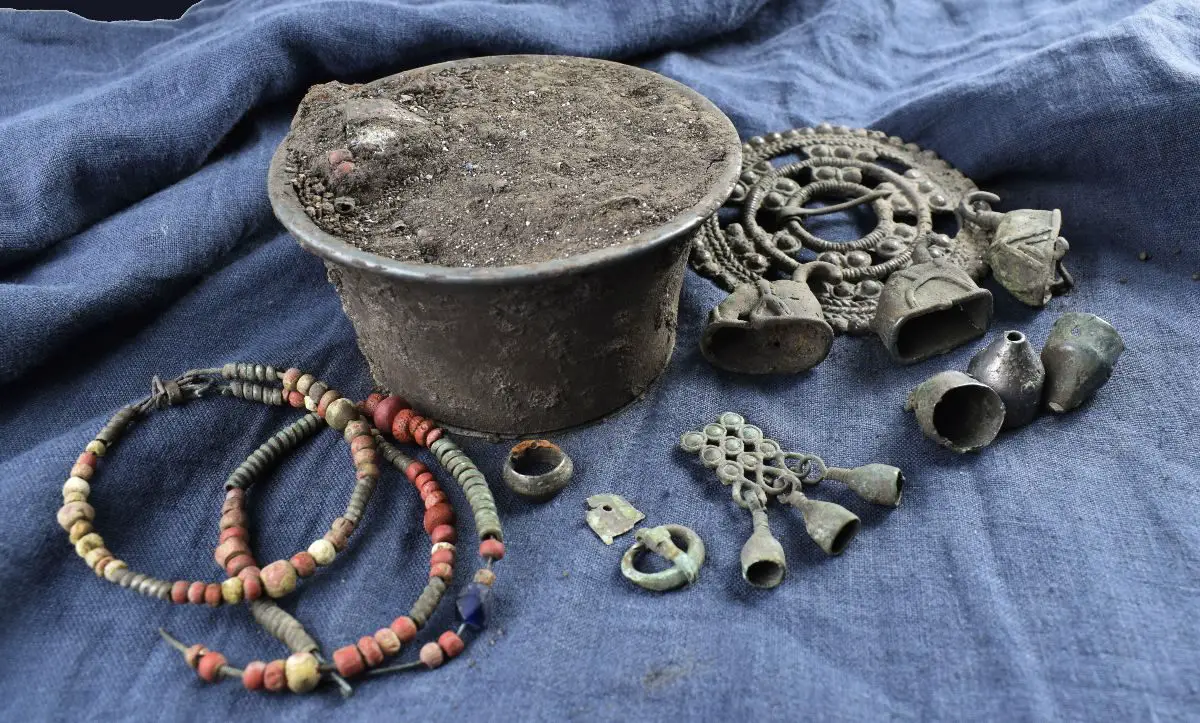Archaeologists from the Institute of Archaeology of the Russian Academy of Sciences has discovered a treasure hoard near the Nerl-Klyazminskaya river, in the Suzdal Opolye region of Russia.
The hoard was uncovered during ongoing surveys of a previously unexplored area in an ancient settlement, where fragments of jewellery appeared on the surface due to agricultural activity.
This led to an exploratory 2×2 metre pit being excavated, revealing Volga-Finnish jewellery deposits from the period of the Great Nations Migration from the middle of the 1st millennium AD.
The treasure consists of ornaments for a traditional female costume, typical of the Volga Finns’ culture, and an imported metal bowl. The Volga Finns (sometimes referred to as Eastern Finns) are a historical group of indigenous peoples of Russia living in the vicinity of the Volga.

The history and nature of the development of the Suzdal Opolye in the 1st millennium still remains unexplored. Traditionally, it is believed that the predecessors of the Slavic population on the territory of North-Eastern Russia was one of the groups of the Volga-Finnish tribes, recorded in the Russian chronicles under the name “Merya”.
The ornamental deposit includes three bracelets made of beads, and over 300 small beads which were probably embroidered onto a decayed piece of clothing.
The researchers also discovered six cast hollow “duck” pendants suspended on a leather cord with threaded metal beads, typical of the Finno-Ugric cultures inhabiting the space between the Volga and the Urals, and a round openwork fastener plaque.

Archaeologists suggest that the ornaments were deposited in a box made of birch bark (of which only a few fragments have survived) in the central part of the settlement, but the reason for hiding the treasure is still a mystery.
The treasure hoard also included a metal bowl with a loop-shaped handle, that appears to be a middle eastern import, but predates the ornamental deposit.
Alexander Morozov of the Institute of Archaeology of the Russian Academy of Sciences said: “These are not just collected items: they are elements of a woman’s costume. The find lifts the veil over the “Finnish prehistory” of the Suzdal Opolye, which is known today to historians and archaeologists mainly as one of the centres of ancient Russian culture. Further research of the objects of the treasure and the settlement will make it possible to understand how Opolye was developed in the period preceding the Slavic colonisation.”
Header Image Credit : Russian Academy of Sciences







